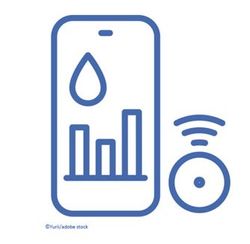The Value of Screening and Early Detection in Diabetic Retinopathy - Episode 3
Practical Considerations in Diabetic Retinopathy Screening
An expert in the management of diabetes provides insight into common challenges leading to low rates of diabetic retinopathy screening in primary care settings, highlighting the need to increase access to care.
Allen Dobson, Jr., MD, FAAFP: To make sure our listeners understand, can one of you talk about the clinical implications of delayed detection and therapy and maybe a little about the cost implications to the patient and to the system? That’s open for any of you guys to comment on.
Shelton Hager, MD: Unfortunately, once you have visual loss secondary because of vessel growth and rupture, the patients’ social determinants of health, as well as their activities of daily living are going to be curtailed. It’s going to be hard for them to dress themselves, walk, ambulate, and do all the things they need to do to live independently at times. It can be done, but with great stress on themselves and family members. It’s also has a great cost.
One of the things I was going to comment on is that in a busy primary care office visit where you’re dealing with multiple problems, with diabetes, you talked about checking their A1C [glycated hemoglobin], microalbumin, lipids, as well as their other problems. It’s absolutely necessary, but it would be difficult in a busy practice to add to the screening. My practice has done this before, taking an extra staff member down the hall. One of our payers encouraged us to use the RetinaVue delivery system. But that also involves the patients to be dilated at times, which can be difficult as well. But it isn’t insurmountable. We have workflow where it works, but it’s also an extra thing in an already busy visit.
Allen Dobson, Jr., MD, FAAFP: Yes. Is there a gold standard for screening? This falls into a lot of the problems that we have as primary care physicians [PCPs]. You’re seeing a patient, you have this list of things, and you refer them for their screening to another health care professional, but they never go. They’re lost to follow-up. Is there a new gold standard screening or a series of them that can more easily be done to make sure that we don’t miss diabetic retinopathy in its early stages?
Wade Brosius, DO: The gold standard exam is still the dilated exam. But as far as screening is concerned, we enjoyed our opportunity to partner with Topcon Healthcare and have the retinal camera in the office. Our group is in a suburban Philadelphia marketplace. We service about a 180,000 primary care lives. We put it in all of our primary care offices. We originally started with a handheld model and quickly switched to the desktop model once we had buy-in from the practices. It’s been very easy.
When you take a look at the percentage of the population of diabetics, and type 2 diabetics in particular, who have diabetic retinopathy, it’s alarming. About 30% of people with diabetes have diabetic retinopathy. But fortunately, early detection and treatment can reduce the risk of blindness by about 95%. This is really important. Quite honestly, the new gold standard is to have more accurate, aggressive, and scheduled screenings done in the primary care office.
Steven Peskin, MD: To amplify that, we want to smooth the barriers. Sometimes there may be things the payers get a little askance with paying for in primary care practice, an ultrasound, something like that, where there may be a sense of possible overutilization. This is an area where we want to smooth the path and make it as easy as possible to increase the screening rates using primary care practice–based photography or imaging that gets looked at by the retina specialist.
Allen Dobson, Jr., MD, FAAFP: Who in your office can perform these exams? Is it the PCP, or is this something you train your staff to do? How does it work exactly?
Wade Brosius, DO: I’ll go first. For us, we have all our medical assistants get trained on it. We put together a workflow to make it easy. What we did is very simple. Does the patient already have proliferative retinopathy, yes or no? If the answer is no, they’re appropriate for screening. If the answer is yes, they get bounced right back to their retina specialist. We try to do that at the very first visit of the calendar year to make sure it’s done yearly. In the event that people are too far behind or something happens, like the patient has to leave urgently to care for a family member or something, we make sure we catch it on the very next visit.
In our offices, the medical assistants enjoy it because it’s another tool they have, and they’re not just being health care waitresses where they bring a patient back, take their order, and check them out. They’re able to do something that’s a little more meaningful, and they enjoy it. We’ve also spent some extra time making sure they understand what they’re doing so that when they see the pictures, they know they’ve captured it the right way. We’ve found it to be a very positive experience.
Shelton Hager, MD: We do ours centrally. We have a diagnostic center. We also do mammograms and DEXA [bone density] scans, so it’s one of those things where it becomes a preventive visit to a site other than the primary care office. We can also do it at the primary care office, but we find it to be beneficial if they get into the habit of thinking, “OK, I need to do my mammogram. I also need a DEXA scan.” We can also schedule that retinal exam at the same time.
Transcript Edited for Clarity



